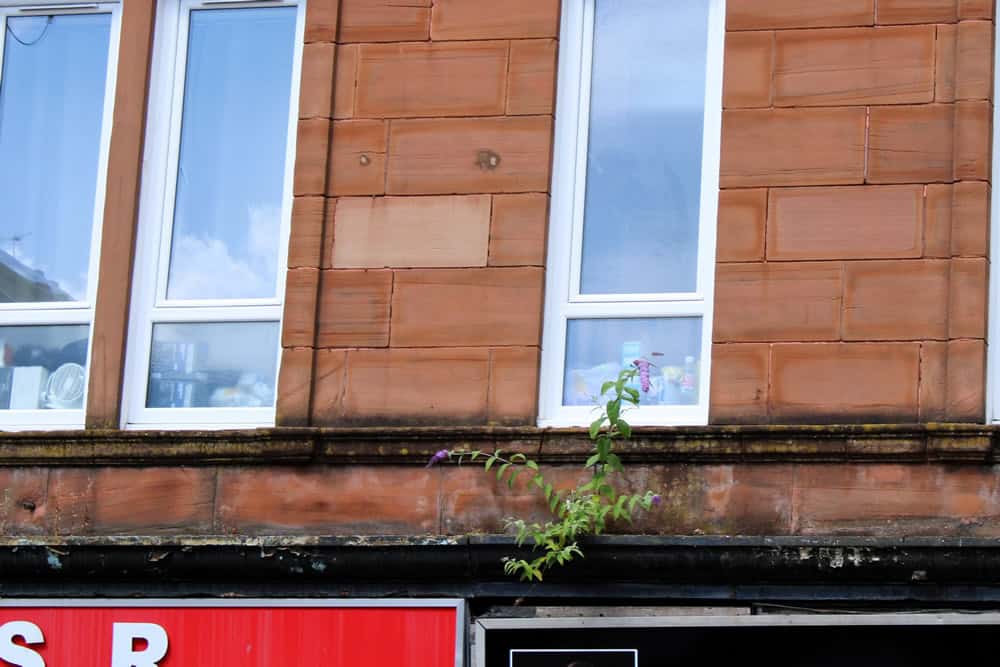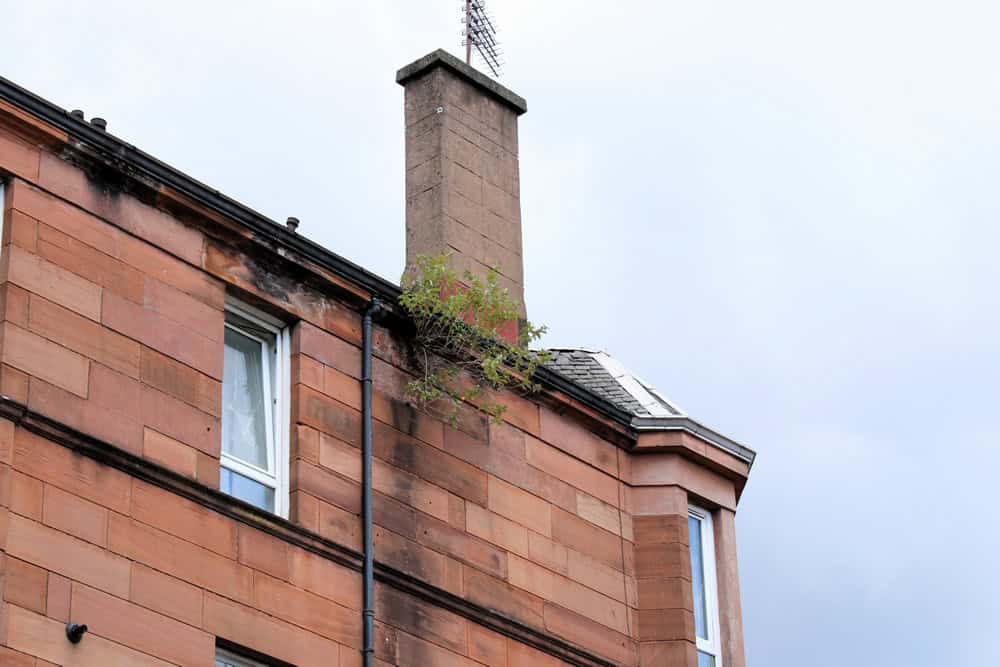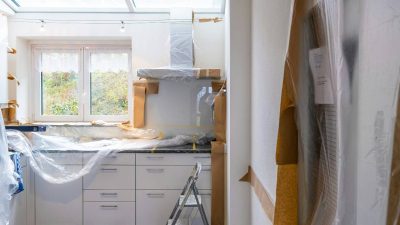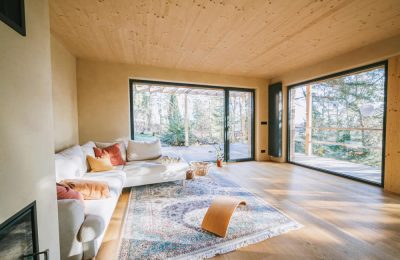With summer upon us, plants are soaking up the sun and growing in the usual places, like gardens and parks – but they can also be seen growing in less desirable places, like in the gutters and walls of tenement buildings. Plant growth can cause serious damage to properties, so it’s crucial to take preventative measures, like regular gutter cleaning, building checks, and thinking about the types of plants you choose to grow in your garden.
How plant growth damages buildings
Plant growth can occur in various places on buildings and can have dire consequences for their structure and stability.
On traditional stone tenements, moss and plant growth can build up, particularly on string courses (a decorative horizontal band on the exterior wall of a building). Plants can also grow on cornices and decorative mouldings on buildings. Windblown seeds can lodge in open joints, and as these seeds take root, their growth can cause severe damage.
Gutters are another hotspot for plant growth on buildings. If they are not cleaned regularly, blockages or plant growth can prevent rainwater draining, causing overflows. Overflows of water can cause dampness in the walls. If left untreated, this can lead to further damage to the stonework and sometimes escalate to structural issues, such as rot in joist ends.
Plant growth near air vents in the outside walls can also cause issues by reducing the ventilation below ground level and lead to dampness. Left untreated, damp may lead to rot in timber floor joists and could damage the structure of the building.
Common plant growth that affects buildings
Certain species of plants can affect buildings more than others. It’s recently been noted by a Glasgow Heritage Trust that the city is struggling to deal with effects of Buddleia, an invasive plant species that causes significant damage to buildings. While attractive, this popular garden plant produces millions of seeds and easily grows wherever there is soil, including cracks in buildings. It has a fibrous root system, which means its roots grow in all directions, penetrating a building’s structure, and is very difficult to remove.
Japanese knotweed is another common plant that poses a risk to buildings. It is also classed as an invasive species and is notorious for its aggressive growth and ability to damage buildings. Additionally, recent media coverage on bamboo has highlighted how aggressively this plant can grow and how it can affect a building’s foundations, causing cracks and structural instability.
Significant ivy growth can be damaging to buildings, particularly stonework. For example, Boston ivy can draw minerals out of stone, leading to decay. Ivy can obscure daylight, preventing stone’s natural wetting and drying cycles and making it more vulnerable to damage from frost.
Preventative measures
There are several preventative measures that can be taken to prevent damage to buildings from plant growth. First, it’s recommended to have a professional building survey carried out every five years to assess the condition of your building. When it comes to plant growth, ensure that any cracks in the external walls are noted as part of the building survey and follow up on the surveyor’s recommendations for treatment. Addressing cracks is not only important for your building’s structure but can also help to prevent seeds from lodging and leading to plant growth in walls.
In between professional building surveys, make sure to check your building, the garden area, as well as neighbouring buildings and gardens for signs of plant growth on a regular basis, ideally quarterly with the season changes. The sooner that plant growth is spotted and removed, the better.
If you own a property in a stone building with exposed string courses and cornices, consider protecting them with leadwork to help to mitigate the risk of seeds lodging in open joints.
An essential maintenance task in all tenement buildings is to annually clean the gutters. This can ensure that any plant growth or debris is removed, allowing for proper water flow and preventing overflows. Dampness and potential structural damage caused by overflows can cost thousands to repair, whereas gutter cleaning usually costs a few hundred pounds.
Regularly checking the air vents around your building and clearing them of any plant growth can help to prevent dampness and ensure proper ventilation of the area below ground level. This simple maintenance task can help to avoid more significant problems down the line.
Lastly, be selective about the plants you grow in your front garden if you own a ground floor flat or the back court. Opt for non-invasive species and consider their potential impact on nearby buildings. Proper garden planning and maintenance can help to protect your property and prevent future issues.
Dealing with plant growth
As with a lot of repairs and maintenance to tenement buildings, flat owners may need to come together to address issues of plant growth, depending on which part of the building is affected. Gutter cleaning and repairs to the external walls of a tenement building are usually a common responsibility, shared by all the owners in the building. So, if there is plant growth in the gutters or in the external walls, dealing with it is likely to be a common responsibility. As always, check your property titles to confirm who is responsible for each maintenance task or repair and the share of costs. If the titles are silent, the default rules in the Tenements (Scotland) Act 2004 must be followed for that particular repair or maintenance task only.
If you have significant plant growth on your building, such as of an invasive species like Japanese knotweed or Buddleia, consider consulting a professional to advise and facilitate removal. Additionally, cracks caused by plant growth should be checked by a structural engineer to ensure the building’s structural integrity has not been compromised.
Plant growth in and around buildings can cause significant damage if left unchecked. By working with your co-owners and taking preventative measures such as regular gutter cleaning, building surveys, and careful plant selection, you can protect your building and property from the adverse effects of plant growth. Regular maintenance, seeking professional help when needed, and prompt treatment of issues are key to preserving the structural integrity and aesthetics of buildings, ensuring they remain safe and sound for years to come. To learn more about organising common repairs and maintenance in tenement buildings, check out this article.












